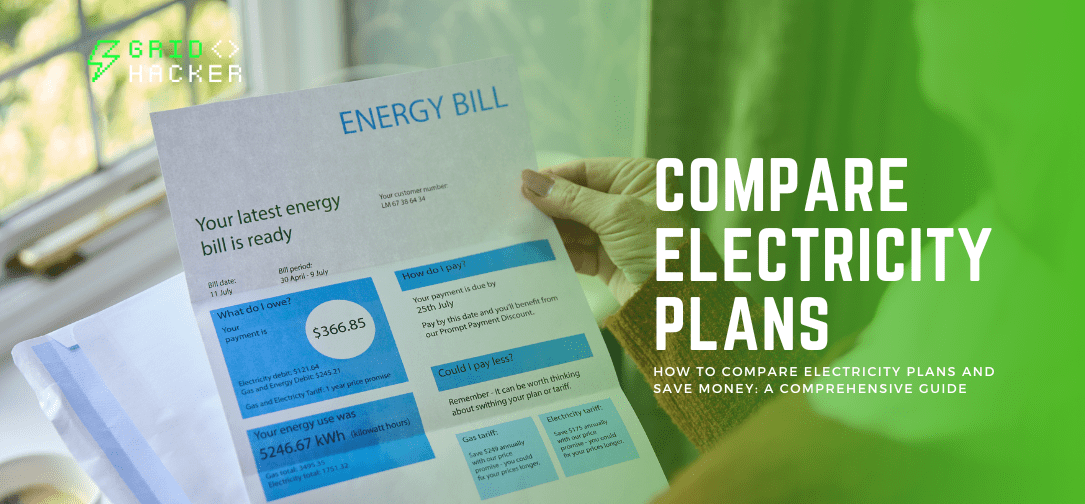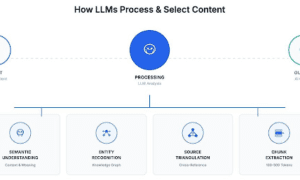Are you paying too much for electricity? With so many options available, selecting the right energy plan can often seem overwhelming. That’s why we’ve partnered with Grid Hacker to create the following guide that will help you understand the key factors that affect energy costs and show you how to compare different plans effectively. We’ll explore everything from the basics of energy deregulation to the latest renewable energy trends. By the end, you’ll have the tools to make informed decisions that could lower your monthly bills and promote a more sustainable future.
Understanding Energy Deregulation: What It Means for Consumers
Energy deregulation means reducing or removing government rules in the electricity market to increase supplier competition. For consumers, this change offers the ability to choose from multiple electricity providers, which can lead to improved services and lower prices. Understanding how deregulation affects the market helps consumers make better choices, potentially finding plans that suit their needs while saving money.
When Should You Compare Electricity Plans?
Evaluating your electricity plan periodically is key to ensuring you get the best deal possible. Let’s take a look at the best times to do so:
- Before Your Contract Expires: Make sure to review your plan before it ends to avoid automatic renewals or service lapses that aren’t in your favor.
- When Electricity Rates Change: Keep an eye on market trends and be ready to adjust your plan as rates change to ensure you’re getting the best terms.
- After Significant Lifestyle Changes: Moving, upgrading your home, or buying high-energy appliances means it’s time to reassess your energy needs and plan suitability.
- Annually: Make it a habit to review your electricity plan each year to explore new options and ensure your plan still matches your usage.
- During Promotions: Capitalize on special promotions and incentives from providers, which can lead to significant savings.
How to Compare Electricity Plans
Selecting the right electricity plan involves a clear understanding of critical factors that influence both your bills and the quality of service you receive. Here’s what to know about comparing electricity plans:
- Evaluate Your Energy Needs: Review your past electricity bills to identify peak usage times and overall energy consumption. This helps determine which plan offers the best rates for your specific needs.
- Understand Pricing Structures: Examine how different plans price electricity. Some might offer fixed rates, while others have variable rates based on usage or time of day.
- Check Contract Terms: Look for the length of the contract, early termination fees, and any other clauses that could affect your flexibility to switch plans.
- Consider Customer Service: Research the provider’s customer service ratings and support infrastructure. Good customer service can save a lot of hassle in managing your account or resolving issues.
- Explore Renewable Energy Options: If sustainability is a priority, look for plans that include renewable energy sources, such as wind or solar, which can also impact your energy costs in the long run.
Factors to Consider
When selecting an electricity plan, it’s crucial to consider several key factors to ensure you choose the most suitable and cost-effective option for your needs. These include:
- Rate Type: Based on your risk tolerance and price stability preference, choose between fixed, variable, or indexed rates.
- Contract Length: Consider how long you want to commit to a plan. Options typically range from month-to-month to multi-year contracts.
- Fees and Penalties: Understand any fees for early termination, late payments, or other penalties that could increase costs.
- Renewable Energy Content: If environmental impact is important to you, check the percentage of renewable energy offered under various plans.
- Incentives or Rewards: Some companies offer rewards programs or incentives for signing up, such as cashback or discounts on energy-saving products.
Tips for Saving Money on Your Electricity Bill
It’s important to mention that reducing your electricity bill involves more than just switching plans. In reality, it also requires adopting smart energy-use habits and taking advantage of energy-saving technologies.
- Use Energy-Efficient Appliances: Upgrade to energy-efficient appliances that consume less electricity, which can lead to significant savings.
- Adjust Your Thermostat: Small adjustments to your thermostat can have a big impact on heating and cooling costs.
- Seal Leaks and Insulate: Proper insulation and sealing leaks help maintain your home’s temperature more efficiently, reducing energy consumption.
- Utilize Smart Home Devices: Invest in smart thermostats and lighting systems that adjust automatically and can be controlled remotely for improved convenience and energy efficiency.
- Schedule an Energy Audit: Have a professional conduct an energy audit to identify where you can make the most impactful changes to reduce energy consumption.
Making the Switch: What to Expect When Changing Electricity Plans
Switching electricity plans can be straightforward if you’re prepared. Here’s what to expect:
- Research and Compare Plans: Using the factors outlined above, start by comparing plans to find one that fits your needs.
- Check for Switching Fees: Ensure there are no high fees associated with leaving your current plan, especially if you’re under contract.
- Understand Timing: The switch should not cause any interruption in your service. It often takes one to two billing cycles to see the change in charges.
- Follow Up on the Final Bill: After switching, ensure you receive a final bill from your old plan and that there are no outstanding charges.
The Future of Renewable Energy: Trends and Innovations to Watch
As the world increasingly focuses on sustainability, the renewable energy sector is evolving rapidly. Key trends and innovations are shaping the future, promising to enhance the efficiency and accessibility of clean energy. Here are a few everyone should know about:
- Advancements in Solar Technology: New technologies like solar skins and enhanced photovoltaic cells are making solar energy more efficient and visually appealing.
- Growth of Wind Energy: Offshore wind farms are expanding and are supported by new technologies that increase their resilience and output.
- Energy Storage Solutions: Developments in battery technology are crucial for managing the intermittency of renewable sources, making energy storage more affordable and efficient.
- Smart Grids and Energy Systems: The integration of IoT and AI technologies into energy systems is facilitating smarter energy management and distribution, optimizing renewable resource usage.
- Hydrogen Fuel: Investment in hydrogen energy is growing, with significant potential for wide-scale use in industries and transportation.
Conclusion
The bottom line is that carefully comparing electricity plans is crucial for optimizing your financial savings and environmental impact. As energy markets evolve, integrating renewable energy options becomes increasingly beneficial, aligning with both global sustainability goals and the trend toward smarter energy cost management. By choosing the right plan that fits your usage and preferences, you can significantly reduce your bills and contribute to a sustainable future.
If you’re ready to find an electricity plan that aligns with your needs and preferences, especially one that incorporates renewable energy options, visit GridHacker. They offer tailored comparisons to help you choose wisely, ensuring you get the best rates and services that meet your energy goals. Explore your options with GridHacker today and take a proactive step towards smarter, more sustainable energy consumption.



































